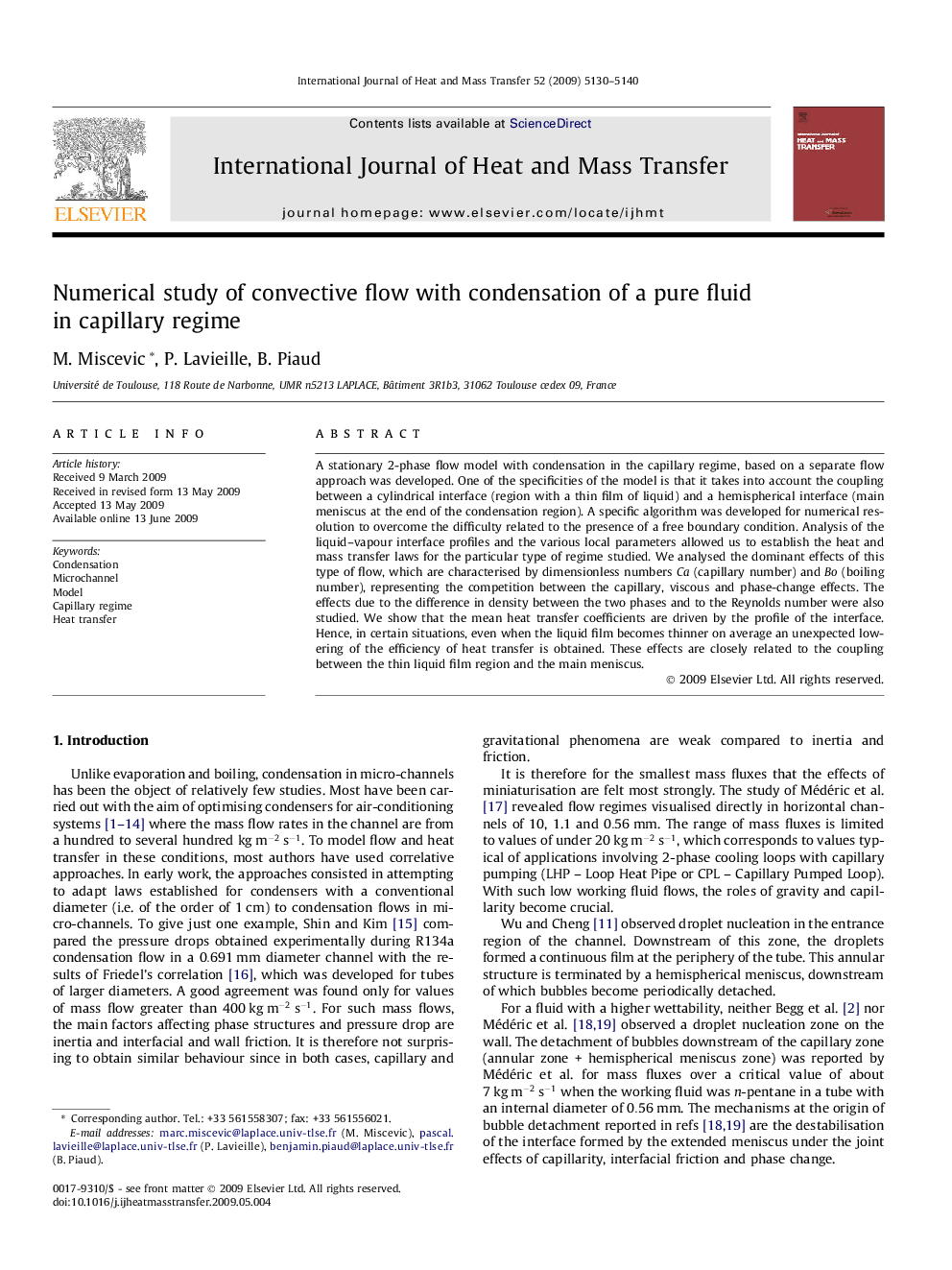| Article ID | Journal | Published Year | Pages | File Type |
|---|---|---|---|---|
| 661434 | International Journal of Heat and Mass Transfer | 2009 | 11 Pages |
A stationary 2-phase flow model with condensation in the capillary regime, based on a separate flow approach was developed. One of the specificities of the model is that it takes into account the coupling between a cylindrical interface (region with a thin film of liquid) and a hemispherical interface (main meniscus at the end of the condensation region). A specific algorithm was developed for numerical resolution to overcome the difficulty related to the presence of a free boundary condition. Analysis of the liquid–vapour interface profiles and the various local parameters allowed us to establish the heat and mass transfer laws for the particular type of regime studied. We analysed the dominant effects of this type of flow, which are characterised by dimensionless numbers Ca (capillary number) and Bo (boiling number), representing the competition between the capillary, viscous and phase-change effects. The effects due to the difference in density between the two phases and to the Reynolds number were also studied. We show that the mean heat transfer coefficients are driven by the profile of the interface. Hence, in certain situations, even when the liquid film becomes thinner on average an unexpected lowering of the efficiency of heat transfer is obtained. These effects are closely related to the coupling between the thin liquid film region and the main meniscus.
